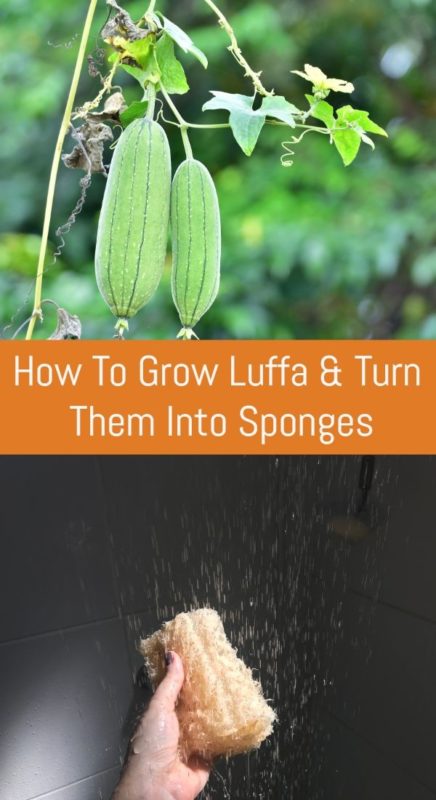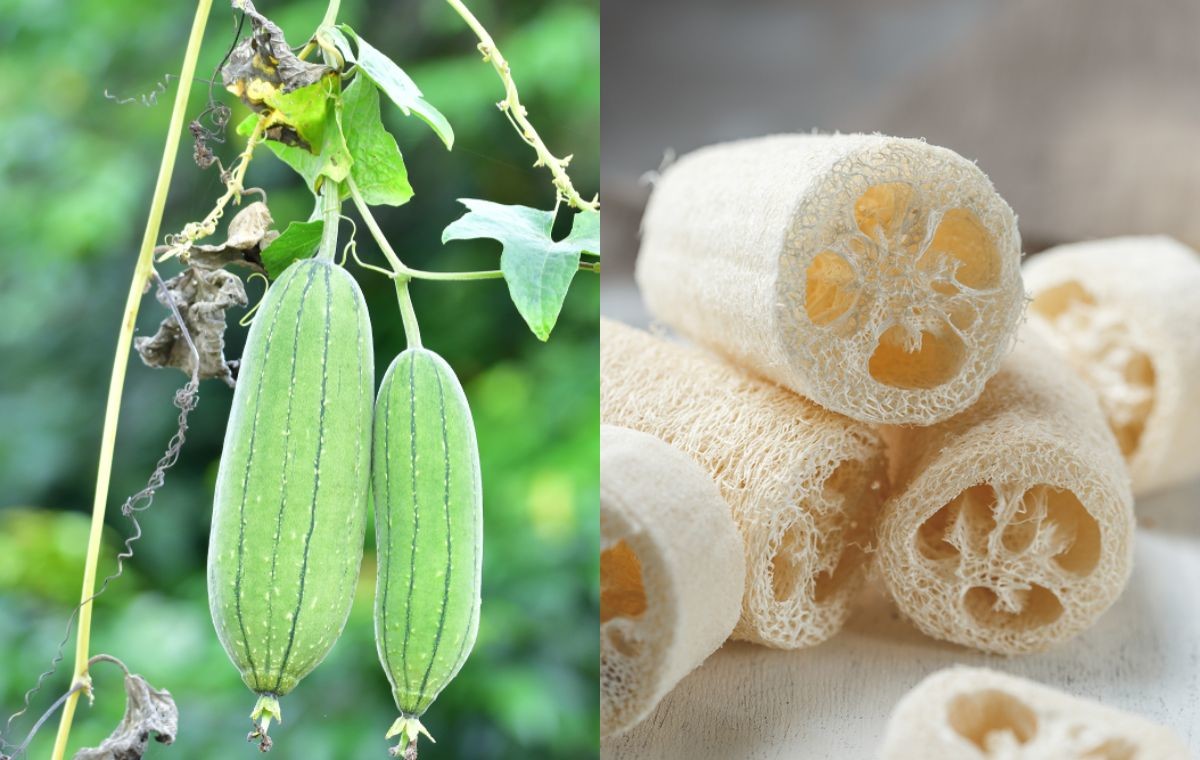
Luffa (sometimes spelt loofah or loofa), otherwise known as a ridge gourd, is a popular fruit to grow in the garden, but often not for food, but for making sponges.
Much of the marketing of luffas, shows the sponge in a seaside setting, surrounded by pretty shells and the like, leading many to believe they’re some kind of “Sponge Bob,” or the remains of an ocean creature, but they’re actually the fibrous flesh of the mature luffa gourd.
When luffa is still young and tender, it can be cooked and eaten like squash, with a taste similar to zucchini, or sliced up into a salad, offering a wide range of nutrients.
You might see it spelled as loofah – it’s the same thing, part of the gourd family that grows on vines that can get to be 30 feet long.
As luffa grows older, it becomes woody, with the flesh melting away, leaving an abrasive, fibrous skeleton that makes a great sponge, the most famous way to make use of this fruit.
A luffa sponge offers numerous uses.
6 Uses For A Luffa Sponge
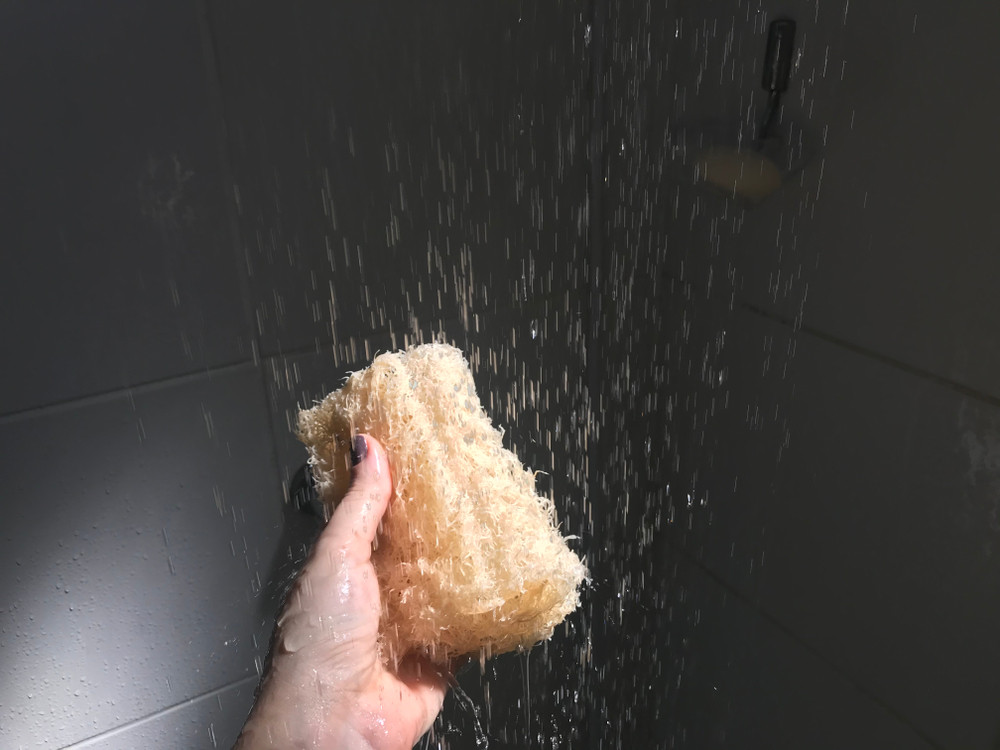
1. Skin brushing
A luffa sponge is a great way to practice skin brushing, which helps detox the skin so that it can release toxins. In turn, this serves to stimulate the lymphatic system, an essential part of the immune system.
It encourages cell regeneration and boosts blood circulation, improving skin tone and resulting in radiant-looking skin.
All you have to do is wet the sponge with a little warm water to soften it, using gentle strokes across the body with it to remove dead skin and eliminate surface toxins.
2. Getting more out of your soap or body wash
A luffa sponge can help you make your soap or body wash last longer and be more effective too.
3. Scrub dishes and other surfaces
If you have a dish or pan that’s tough to clean but don’t want to scratch its finish, a luffa sponge is ideal. The natural fibers are abrasive yet don’t scratch the surface.
You can also use a luffa sponge to clean surfaces like your stove top, cabinets, floors and other areas of the kitchen without fear of damage.
4. Keep your bars of soap dry
Slice up a round of luffa and put it into your soap dish. This helps to prevent your soap from sitting in water that collects and makes it last longer.
5. Clean muddy shoes
Luffas are great for scrubbing muddy shoes clean, they can get all of that mud out of the treads. They’re easy to use for this purpose and rinse clean with just a little water.
6. Make a back scratcher
Luffa sponges make great back scratchers too. Use a flat handle, or make one from some wood you have lying around, a yardstick, or so on.
Each luffa has three tunneled holes from one end to the other, so you can place your handle or stick through one of the holes and then attach it using glue or some other type of adhesive, or simply tie it on.
How To Grow Luffa
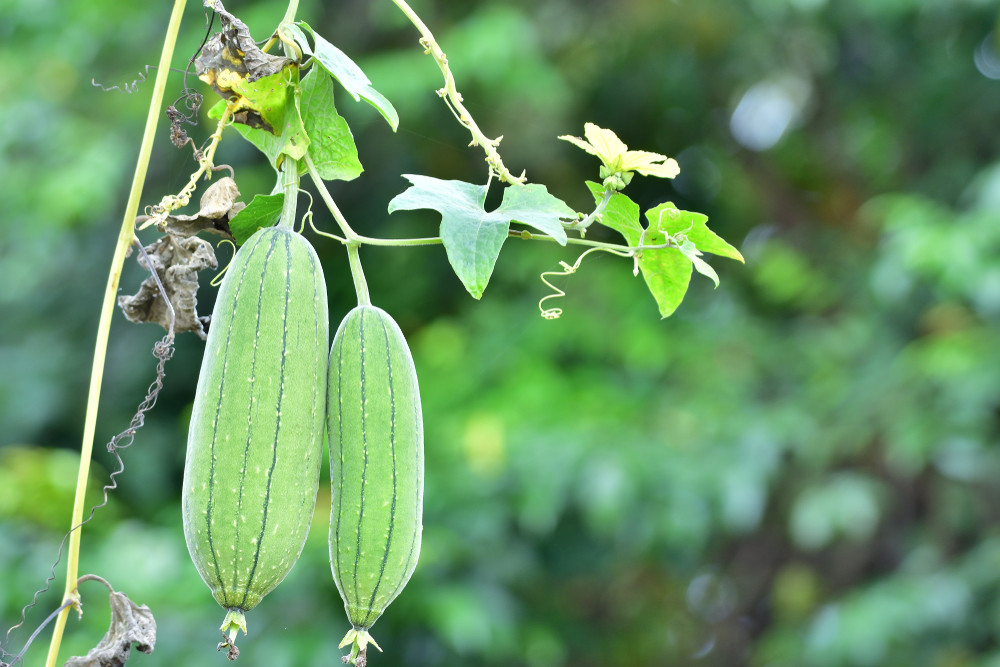
Obviously, the first step to your own endless supply of luffa sponges is to grow your own luffa.
They like full sun and well-drained, but moist soil. Using lots of compost or manure is important to provide them with the nutrients they need.
They’re grown similar to a winter squash, with the vines, as mentioned, commonly growing to 30 feet, which means they need a lot of room to roam, or a sturdy trellis.
Luffas also have an extremely long growing season, requiring 150 to 200 warm days to ripen, which means in more northern areas, you’ll need to start the seeds early and inside before planting outdoors.
The seeds
You can purchase luffa seeds at many nurseries and garden stores, or even online. These are the best luffa seeds available on Amazon.
Again, if you live in a cooler zone (generally Zones 6 or lower), begin your Luffa seeds early, indoors, about six weeks before the last frost date.
Before planting, soak them in water for 24 hours in order to encourage germination.
Plant them about a half- to three-quarters of an inch-deep into the soil, and water well.
Before planting them in the ground, they should be at least a foot long.
If you live in a warmer area, higher than Zone 6, you can plant your seeds directly in the soil or outdoor container once the weather is warm enough in late spring.
Temperatures should average at least 70 degrees Fahrenheit.
Transplanting outdoors
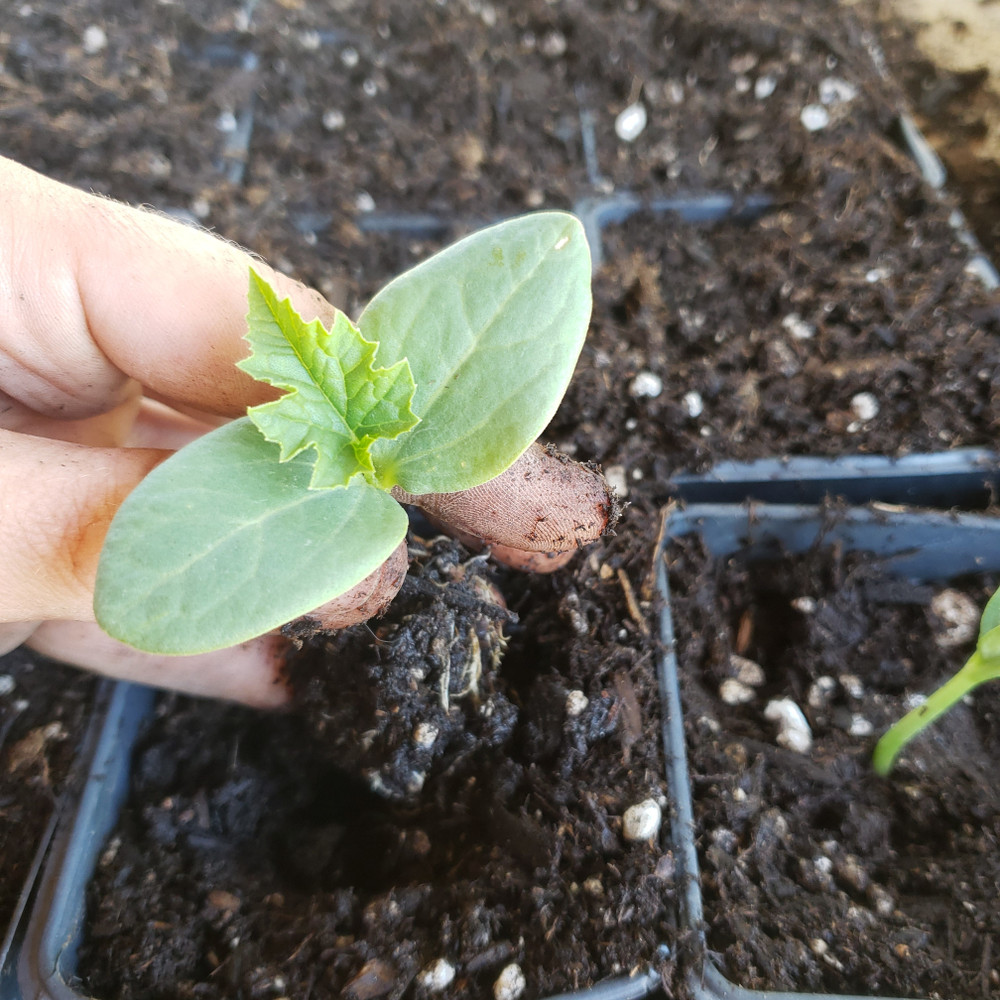
Once the plants are at least 12 inches long, and all danger of frost has passed, you can plant them into the ground.
They tend to do best in hard clay soil.
Remember that the vines will grow to be around 30-feet-long, and require a very sturdy trellis, or something like a chain link fence. The gourds also need at least eight hours of sunlight a day.
The vine will flower, and behind those flowers, little luffas will begin and emerge, continuing to grow into a large gourd, about a foot long.
Give them a consistent supply of water, but not waterlogged, soggy soil.
If an unexpected cold snap threatens your plants, you can cover the seedlings using a vented cloche, or a plastic soda bottle cut in half, with lots of air holes punched in.
If the plants are subjected to several days of cold weather, it can stop them from growing and may take a month before the plants get over the shock.
Caring for your luffas
Once your luffas are planted, be sure to keep the weeds under control by covering the area with organic mulch, or pulling them as they appear.
It’s important to keep them watered without overwatering – if there is no rain for several days, or if the leaves begin to wilt, water your plants deeply.
Flowering
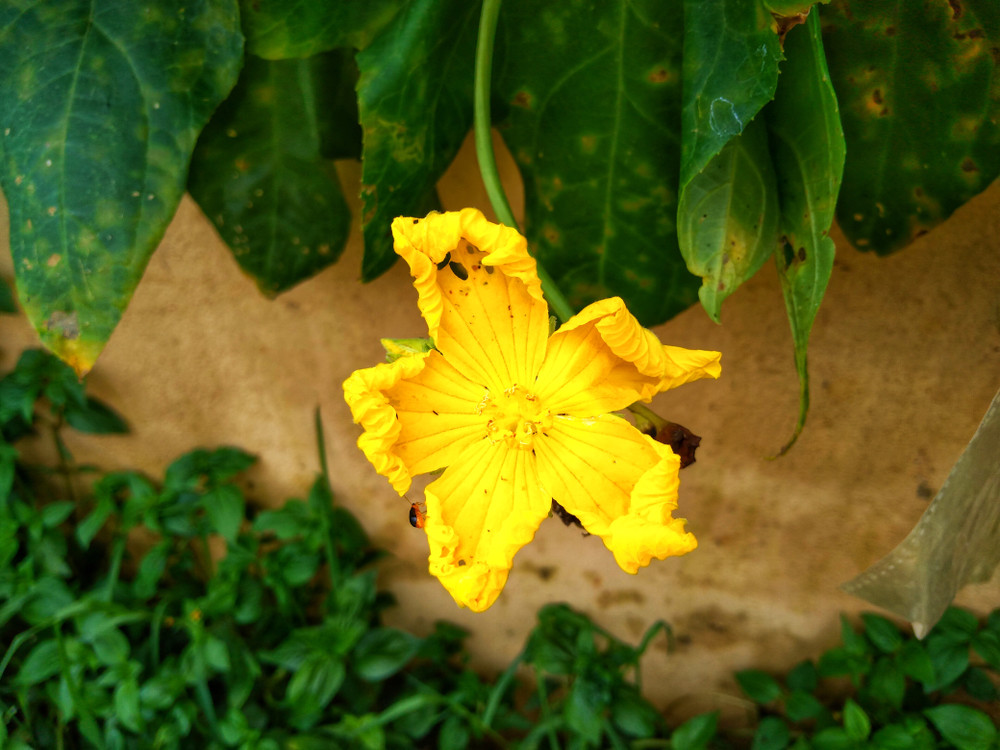
When the flowers begin to appear, you might notice that some have the little green gourds behind them and others don’t. That’s what should happen as gourds have both male and female flowers.
It’s the female flowers that develop tiny gourds if they’re pollinated. The males exist only to create the pollen.
If you notice that the gourds shrivel up after the flower closes, you may need more pollinators. You can help the process by playing “bee.”
Simply pluck one of the male flowers that opened recently, and then rub the pollen center against the sticky protrusion that’s inside the middle of the female flowers that have just opened.
Here’s a photo tutorial guide to hand pollinating your squash plants.
Harvesting your luffa
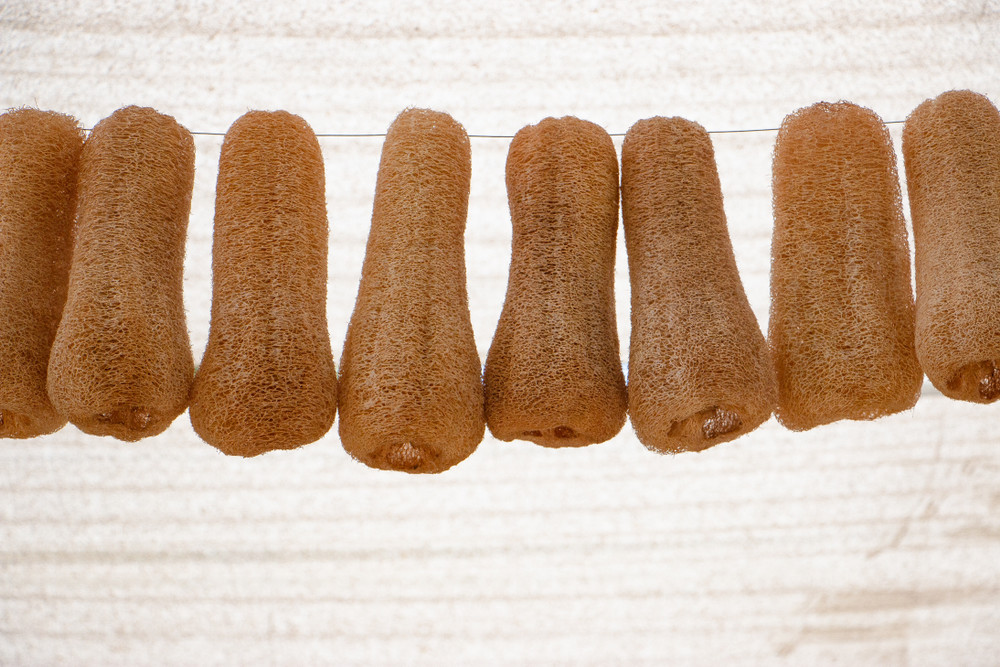
As your goal is to harvest your own sponges, you want to leave the gourds on the vine all season, until the green skin fades to yellow.
Once the luffas begin to turn yellow, they are ready to pick. While you could wait until they turn brown to harvest them, you’ll end up with dark spots on your luffas, so if you prefer them to look more attractive, harvest them when they’re yellow.
The longer mature luffas stay on the vine, the more fibers will develop and the tougher the fibers will be.
If you harvest too early, you’ll end up with luffas that have thin, fragile fibers – that means, when you try to use them, they’ll simply break and crumble, rendering them useless.
If they get hit by frost, be sure to pick and peel the fruit right away.
If they aren’t fully mature, they won’t have enough tough fiber to make a good sponge, so you’ll probably want to toss them into your compost pile.
To reveal your sponge, you’ll first peel off the tough outer skin.
If it’s already cracked, you can pull it off in pieces, but if it’s still intact you can gently squash the fruit until cracks appear. Then, extend the cracks by squeezing the fruit while pulling at the torn edges of the skin using your thumbs.
If the skin is very dry, you might want to soak the fruit in water for several minutes which can make it easier to dislodge the skin.
Once the skin has been removed, you can shake out the seeds by pulling the end of the gourd off. Each one makes a rather astounding amount of seeds, so it does take some work to get them all out.
If you want to save seeds to grow luffa gourds again or share them with others, leave them out to dry on a paper towel at room temperature for a couple of weeks and then store them in an airtight container, in a cool, dry place.
For your sponges, you’ll need to wash the sap out using a powerful jet of water or place them into a bucket of water with some dish soap.
If they have dark spots, you can treat them using non-chlorine bleach for a more uniform, light tan color.
To finish them, dry your washed sponges in the sun. Turn them frequently until they’re totally dry and then store them inside of a cloth bag which will prevent them from getting dusty and keep them usable for years.
Experts recommend that you make sure that your luffa sponge totally dries out between uses. Only use one for three or four weeks before replacing it with a new one and tossing the used one into the compost pile.
You could also soak your luffa in a diluted non-chlorine bleach solution once a week, in order to prevent it from becoming a germ haven.
Eating Luffa
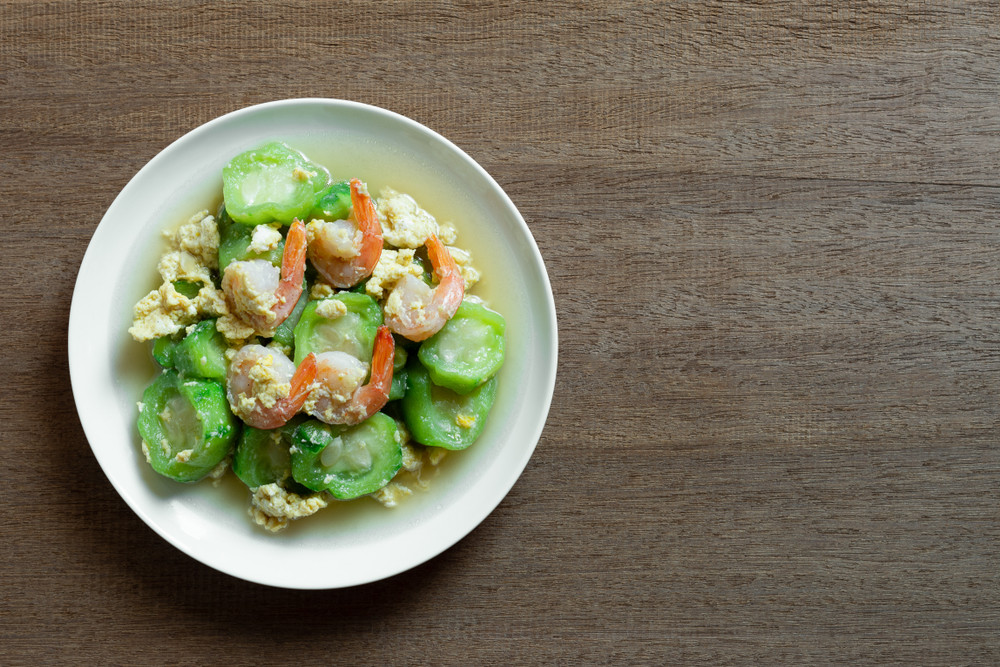
Luffa is commonly used in Chinese and Indian cooking, and, as we mentioned earlier, is very rich in nutrients, including a small amount of protein, fiber and a variety of vitamins, minerals, and antioxidants.
According to the USDA luffas are especially rich in vitamin A and high in manganese, potassium, copper, vitamin B5 and B6, and vitamin C.
Of course, you don’t want to eat a fully dried out luffa, those are meant for your sponges. For eating, pick your luffas when they’re less than 5 inches long and still soft inside. The fibers don’t form until they reach about 12 inches long or so.
The flowers are very similar to squash flowers.
Baby luffas tend to be a little firmer than zucchini when cooked, but taste very much the same as zucchini and are also just as good as soaking up the flavors of whatever is cooked with them.
Consuming them is a great way to use up any flowers or fruits that appear after mid-summer, as they won’t have time to mature into sponges before the inevitable frost hits.
They can be eaten raw, sliced into a stir-fry, sauteed in a bit of coconut or olive oil, cooked in stews, soups, and curries, turned into chutney, or breaded and fried. The flowers can even be stuffed and cooked like squash blossoms.
Luffa Health Benefits
As luffa gourds are nutritionally rich, eating them provides a great way to enjoy a number of outstanding health benefits.
In many Asian nations, the young gourds are revered for much more than their use as a sponge, or their taste. They’re utilized as a traditional remedy for a variety of ailments, such as relieving joint and muscle discomfort, supporting vision and heart health, preventing a blood sugar imbalance, and more.
Relief from arthritis pain
Luffas anti-inflammatory properties can help soothe the swelling and pain associated with arthritis. It’s copper content also helps to boost the strength of muscles and repair connective tissue.
Cancer-fighting
Some studies have suggested that the unique antioxidants they contain may include cancer-fighting compounds, in addition to providing anti-inflammatory abilities.
Reducing the risk of macular degeneration
As luffa contains a good amount of vitamin A, consuming it can help prevent macular degeneration, which leads to blindness.
Research from the National Eye Institute demonstrated that those who took vitamin A, along with vitamin C, copper, vitamin E and zinc (nutrients in luffas) experienced a decrease in their odds of developing macular degeneration by 25 percent during a six-year period.
Pin This To Save For Later
